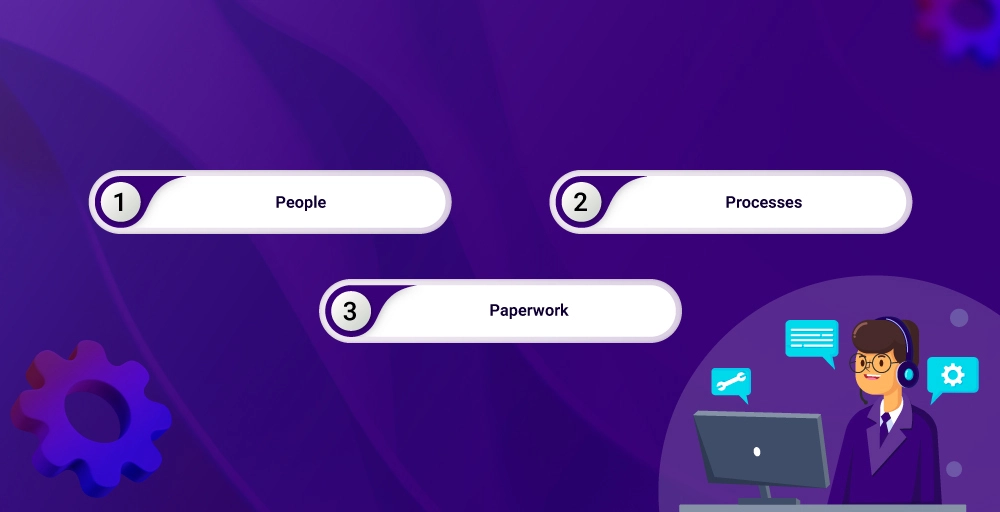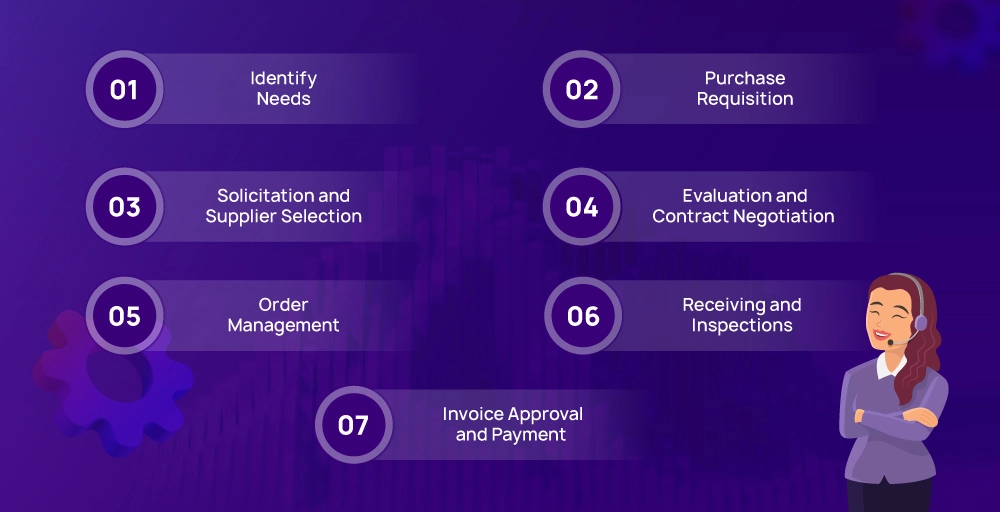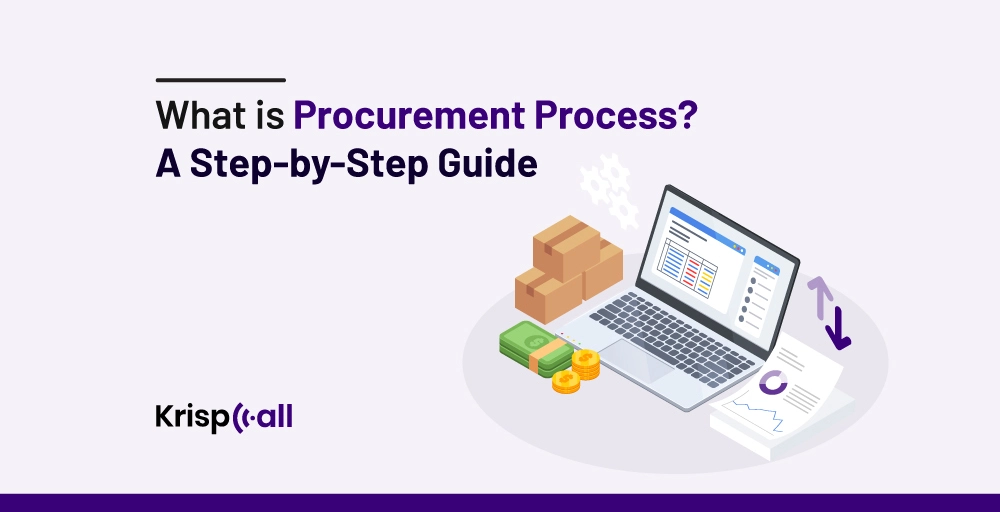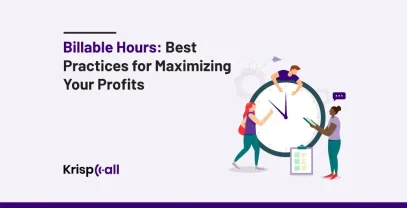Many organizations struggle with 😔managing complex supplier relationships, controlling rising prices, ensuring regulatory compliance, or effectively integrating new technologies into their procurement process.
These problems lead organizations to inefficiencies, increased risks, and higher operational expenses.
Understanding and addressing these problems is critical for any business aiming to optimize its procurement process.
In this blog, you’ll learn what is the procurement process, the benefits and challenges of procurement procedures, the 3Ps of procurement processes, and the steps of the procurement process, along with best practices to optimize the procurement process.
🔑 Key Highlights
- A procurement process is the systematic steps that organizations take in order to acquire goods and services efficiently and effectively.
- 4 types of procurement processes: direct procurement, indirect procurement, goods procurement, and service procurement.
- People, processes, and paperwork are the 3P’s of the procurement procedures.
- Identifying needs, purchasing requisition, solicitation and supplier selection, evaluation and contract negotiation, receiving and inspections are some of the steps of the procurement process.
What is the procurement process?
A procurement process is the step-by-step acquisition and approval of goods and services that a business requires to function, from requisitions to purchase orders and invoices. This process guarantees that the organization gets what it needs in a convenient, cost-effective, and productive way.

An effective procurement process includes an organized approach to purchasing, clearly characterizing requirements, arranging, budgeting, creating a procurement technique, and executing orders.
For example, a manufacturing company needs raw materials for production. So, they request quotes from suppliers, then select one based on price and quality, negotiate terms, issue a purchase order, receive and inspect the materials, and finally proceed with the payment.
What are the types of procurement processes?
There are several types of procurement processes, each tailored to different organizational needs and purchasing scenarios. Some of the types are:
1. Direct procurement
It refers to the process of obtaining products, materials, and services that are directly included in the production of a company’s core products. This includes raw materials, machinery, and other components. The focus here is on securing high-quality inputs that are essential for maintaining production efficiency and product quality.
2. Indirect procurement
It involves acquiring products or services that are not directly connected to the production process but are necessary for day-to-day operations. This includes office supplies, maintenance services, IT equipment, and utilities. Effective management of indirect procurement helps in controlling costs and ensuring smooth operational support.
3. Goods procurement
It is focused on acquiring substantial things that can be physically stored and put away. This includes raw materials, components, finished goods, and machinery. This method involves supplier evaluation, cost transactions, and quality assessments to ensure that the acquired goods meet the desired standards.
4. Service procurement
It involves contracting outside service providers to perform particular tasks or functions. This ranges from consulting and legal services to maintenance and IT support. Managing service procurement requires characterizing benefit scope, execution criteria, and contract terms to ensure that the services given meet the organization’s requirements.
What are the benefits of the procurement process?
The procurement process offers various benefits that are essential for the success and efficiency of any organization. Some of the benefits of the procurement process are:
- Cost savings: An effective procurement process leads to cost savings through strategic sourcing, negotiation, and supplier management. Organizations can reduce overall expenditure on goods and services by achieving competitiveness, optimizing inventory levels, and avoiding waste.
- Quality assurance: A well-defined procurement process ensures that purchased items and services meet required quality benchmarks. Organizations may keep their offerings consistent and reliable by evaluating suppliers, conducting quality checks, and adhering to specifications.
- Improved efficiency: A clear method improves workflows and reduces delays. Automated systems can increase efficiency by minimizing manual activities and speeding up approvals.
- Improved decision-making: The data and insights gathered during the procurement process can help make better decisions about sourcing strategy, budgets, and supplier selection.
- Innovation: Engagement with suppliers during the procurement process promotes innovation. Organizations may achieve continuous improvement and retain competitiveness by sharing ideas, collaborating on product development, and exploring new technologies.
Even with the various benefits, the procurement process may involve various challenges. Here are some of the challenges:
- Supplier management: Maintaining relationships with various suppliers may be difficult and time-consuming, requiring excellent communication and negotiation skills.
- Risk management: There are several risks associated with procurement activities, such as supply chain disruptions, price volatility, and geopolitical concerns, that require proactive risk management.
- Technology integrations: Technology implementation and integration can be disruptive and costly, and user adoption strategies are important to ensure success.
- Data management: In order to make informed decisions and analyze performance, procurement data must be managed effectively, which requires robust data management systems and processes.
- Compliance: It can be challenging to ensure compliance with internal policies and external regulations, which requires meticulous record-keeping and adherence to ethical guidelines.
3P’s of procurement procedure
3P’s are crucial to ensuring the effectiveness and efficiency of the procurement procedures:

1. People
People are the center of the procurement procedure. This includes the procurement team, which is responsible for finding, negotiating, and managing supplier partnerships. For the procurement procedure to be effective, it requires the use of skilled people who understand the market dynamics, possess strong negotiation skills, and can build and manage relationships with suppliers.
Furthermore, stakeholders from multiple departments such as finance, operations, and legal ensure that the procurement process is consistent with the entire organizational goals and requirements.
2. Processes
Procurement activities are guided by organized procedures and workflows called processes. These include identifying market needs, obtaining bids, analyzing offers, negotiating contracts, and monitoring supplier performance.
Well-defined and documented process ensure consistency, transparency, and adherence to internal and external norms and regulations. They contribute to the procurement functions’ overall efficiency by lowering errors, cycle times, and costs.
3. Paperwork
This includes all the documents related to the procurement procedure. This includes purchase orders, requests for proposals(RFPs), bids, contracts, invoices, and payment records. Maintaining correct and complete paperwork is essential to transparency, auditability, and compliance.
What are the 7 steps of the procurement process?
The 7 steps of the procurement procedures are:

1. Identify Needs
The first step in the procurement process is determining the needs and requirements of the organizations. This includes doing a thorough examination to identify the specifications, quantity, and quality of the necessary items or services. Engaging stakeholders from multiple departments is crucial during this phase to ensure that all viewpoints are considered and requirements are accurately defined.
This collaborative method aids in collecting detailed demands and matching them with company goals by setting a clear foundation for the next steps in the procurement process.
For example, while upgrading its IT infrastructure, a company identifies its needs by collaborating with all the departments to establish the type and number of computers needed, ensuring specifications and quality standards are satisfied before proceeding with the procurement process.
2. Purchase Requisition
Once a need has been identified, the next step is to submit a purchase requisition. It can either be written or electronic documents that explain the specific requirements, including the exact quantity and detailed specifications of the items needed. It also includes budgets for the acquisition, ensuring financial resources are managed effectively.
The purchase requisition is an important checkpoint since it provides transparency and accountability while also ensuring all the procurement actions align with the organization’s needs and financial restrictions.
For example, if a marketing department needs new software, they will submit a purchase requisition that includes the product requirements, the required number of licenses, and the allocated budget. The finance department reviews and approves this requisition before proceeding with the purchase.
3. Solicitation and Supplier Selection
This stage involves identifying and evaluating potential suppliers to meet the organization’s procurement requirements. During this phase, companies request quotes, proposals, or bids from multiple vendors. These submissions are then carefully evaluated based on various factors, such as price, quality, supplier experience, and reliability.
Through this evaluation, companies can choose the best supplier who can supply the necessary goods or services at the best price.
For example, a company that requires office furniture requests bids from several vendors. They evaluate the offers based on pricing, furniture quality, vendor experience, and delivery reliability. After considering all considerations, customers choose the vendor that provides the best value and meets the requirements.
4. Evaluation and Contract Negotiation
After selecting the supplier, the evaluation and negotiation phase begins. This phase includes detailed negotiations around key factors like price, contracts, and delivery schedules. The goal is to make sure that both parties understand their expectations and obligations.
By negotiating these parameters, the organizations can get favorable conditions that are consistent with their budget and timeframe, while also ensuring that the supplier meets the the necessary standards and deadlines.
For example, after picking a construction company for a building project, negotiations begin about the project’s cost, timetable, and materials. Before signing the contract, both parties discuss payment schedules, project milestones, and quality standards to ensure alignment and mutual agreement.
5. Order Management
It includes sending an official purchase order (PO) to the selected supplier. This agreement describes the agreed-upon terms like quantity, price, delivery schedule, and any other relevant details. By submitting a purchase order, the organization formalizes its relationship with the supplier and forms a binding contract.
The PO acts as a critical reference point for both parties, ensuring transparency and accountability throughout the procurement processes. It also enables effective order tracking and management, resulting in timely delivery and payment processing.
For example, a manufacturing company may place a purchase order with a supplier for 500 units of raw materials at an agreed-upon price and delivery timeline. This purchase order is a legal contract between two parties, describing the parameters of the transactions and assuring seamless order processing and fulfillment.
6. Receiving and Inspections
Following delivery, the receiving and inspection process begins to ensure that the items or services satisfy the standards provided in the purchase order and contract. This crucial stage involves thoroughly examining the acquired items to confirm that they meet the agreed-upon amount, quality, and condition.
Organizations may maintain quality standards, and risks, and ensure customer satisfaction by conducting thorough inspections. Also, this stage is a crucial milestone for ensuring the accuracy and completeness of the purchase transaction before proceeding with payment or future processing.
For example, a retail store receives 100 laptops and inspects them to ensure they meet the purchase order parameters. If any laptops are damaged or incorrect, the store contacts the supplier to address the issue before completing the sale.
7. Invoice Approval and Payment
Once the goods or services have been examined or accepted, the invoice approval and payment process begin. The suppliers’ invoices are carefully reviewed to ensure that they correspond to the purchase orders and the supplied products or services. This includes verifying the quantity, price, and any applicable terms or discounts.
The organization then makes the payment to the supplier according to the agreed-upon terms, completing the procurement process. This step guarantees that the supplier is compensated accurately, establishing positive business connections and maintaining trust.
For example, after receiving and inspecting 100 laptops, a retail store checks the suppliers’ invoices to ensure they correspond to the purchase order and received items. Finding no problems, the store confirms the invoice and processes the payment to the supplier, completing the transactions.
5 Best practices to optimize the procurement process
Optimizing the procurement process is crucial for efficiency, cost savings, and overall organizational success. Here are 5 best practices to optimize the procurement process:
1. Leverage technology
Use procurement software and e-procurement software to automate tasks, eliminate human errors, and increase data quality. Technology improves visibility into the procurement cycle and allows for better decision-making through real-time data and analytics.
2. Implement clear policies
To ensure consistency and transparency, implementing clear policies is important throughout the procurement process. These policies should specify the procedures for procurement procedures such as supplier selection, bidding, contract management, and purchase order issuing. Clear policies ensure that all the team members understand their roles and duties, which reduces the possibility of errors.
3. Prioritize strategic sourcing and supplier management
Organizations can improve their supply chains by monitoring spending patterns and finding top suppliers. Building long-term relationships with key suppliers, conducting frequent performance evaluations, and encouraging open communications enhance quality and efficiency while lowering costs and risks.
4. Focus on communication and collaboration
Clear communication ensures that aims and expectations are aligned, whereas collaboration fosters a cooperative environment for problem-solving and innovation. This method streamlines the procurement process, resolves conflicts quickly, and enhances supplier relationships, resulting in increased efficiency and better outcomes.
5. Embrace continuous improvement
Organizations can improve their overall performance by consistently evaluating and modifying their procurement procedures. This includes requesting stakeholders’ feedback, analyzing procurement data, and executing corrective actions to address areas for improvement.
Wrapping Up!
Understanding procurement procedures is important for businesses looking to increase efficiency, reduce costs, and maintain high-quality standards. Businesses can optimize their procurement procedures and develop strong supplier relationships by taking a disciplined approach and proactively tackling common obstacles.
Also, procurement operations can be aligned with organizational objectives by implementing best practices like technology, frequent market research, and strategic sourcing.





